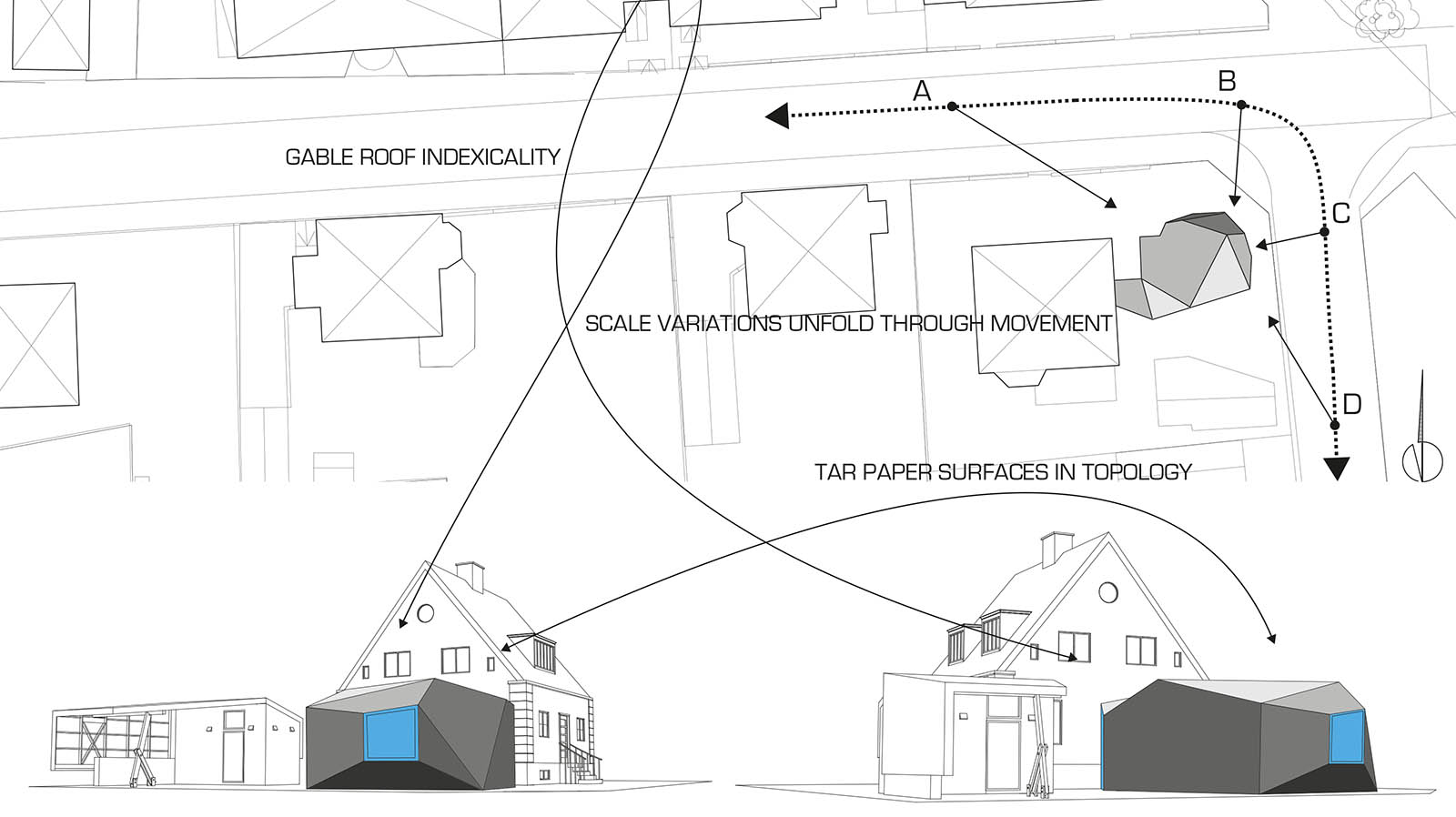The design of Unit C as a critical inquiry into the guidelines for historical preservation
Downloads
DOI:
https://doi.org/10.7480/spool.2018.1.1937Keywords:
Accessory Dwelling Unit, Emergent Building Type, Critical Practice, Zoning, Historical Preservation, Montage Theory, Design ResearchAbstract
This article explores the intersection between the indiscernible forces of urbanisation and the materialisation of architectural form. Taking the design of architectural concept for an Accessory Dwelling Unit (ADU) at Råå in Sweden as an applied research project, the article argues that new techniques are needed to analyse interactions between artistic intentionality and indiscernible forces, and to critically evaluate their impact on the form of buildings and places. The ADU is an emergent building type. Dubbed Unit C at Råå, the ADU was designed to be attached to a neo-classical villa. Unit C did not comply with the single-family residential codes in the zoning plan, thus a zoning amendment was necessary. As Råå has been designated a heritage site, this article takes the guidelines for historical preservation of buildings implicit in the zoning plan as an agent of the indiscernible forces of urbanisation. Adhering to critical practice, the article proposes architectural theory to be utilised as a pragmatic tool in innovative design processes. When designing the architectural concept of Unit C, the architects encountered a space for experimentation and negotiation in the guidelines for historical preservation. By critically analysing this space through architectural theory, the architects clarified relationships between the visual characteristics and the cultural heritage at Råå, which served to usher the architectural concept through the zoning amendment.
How to Cite
Published
License
Copyright (c) 2020 SPOOL

This work is licensed under a Creative Commons Attribution 4.0 International License.

References
Boverket. PBL kunskapsbanken – en handbok om plan- och bygglagen. Ändring av detaljplan [PBL body of knowlege – a handbook on planning and building regulaton. Amendment of the zoning plan]. Retrieved from http://www.boverket.se/sv/pbl-kunskapsbanken/planering/detaljplan/andring-av-detaljplan/
Burry, J., and Burry, M. (2010). Topology. In Burry, J., and Burry, M. (eds), The New Mathematics of Architecture (pp. 157-61). London, England: Thames & Hudson.
Choay, F. (1997). The Rule and the Model: On the Theory of Architecture and Urbanism. Cambridge, MA: The MIT Press.
Dahl, P-J. (2017). Design Beyond Zoning: Negotiating Architectural Form and Bulk Restrictions at HL23. URBAN DESIGN International 22, no. 1, pp. 13-27. doi: 10.1057/s41289-016-0033-5
Dahl, P-J. (2014). Densifying the Suburban Metropolis: Architecture as an Instrument for Urban Planning. Nordic Journal of Architectural Research 2, no. 2, pp. 57-81. SR record: http://cityusr.lib.cityu.edu.hk/jspui/handle/123456789/14143
Eisenman, P. (2007). Written into the Void: Selected Writings 1990-2004. New Haven, CT: Yale University Press.
Fishman, R. (1987). Bourgeois Utopias: The Rise and Fall of Suburbia. New York, NY: Basic Books, Inc., Publishers.
Frampton, K. (1996). Studies in Tectonic Culture: The Poetics of Construction in Nineteenth and Twentieth Century Architecture. Cambridge, MA: The MIT Press.
Fraser, M. (2013). Introduction. Design Research in Architecture: An Overview. Surrey, England: Ashgate.
Helsingborgs museum (1992). Bevaringsprogram för Råå [Conservation program for Råå], adopted by City Council 27 August 1991. Helsingborgs bevaringskommitté: Helsingborg.
Kwinter, S. (1986). La Città Nuova: Modernity and Continuity. Zone 1/2, pp. 80-121.
McLeod, M. (1987). On Criticism. Places 4, no. 1, pp. 4-6.
Rossi, A. (1982). The Architecture of the City. New York, NY: The Institute for Architecture and Urban Studies.
Semper, G. (1989). The Four Elements of Architecture and Other Writings. Cambridge, MA: Cambridge University Press.
von Hildebrand, A. (1907). The Problem of Form in Painting and Sculpture. New York, MA: G. E. Stechert & Co.
Virilio, P. (1991). The Aesthetics of Disappearance. Los Angeles, CA: Semiotext(e).



